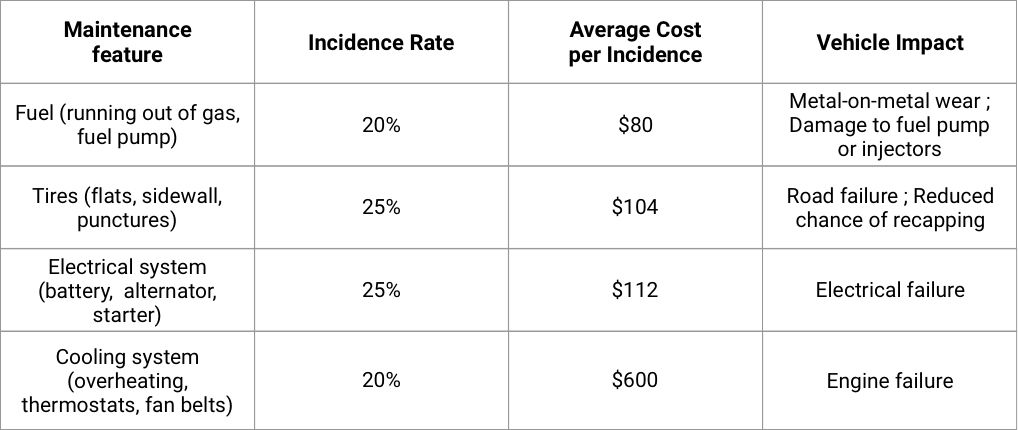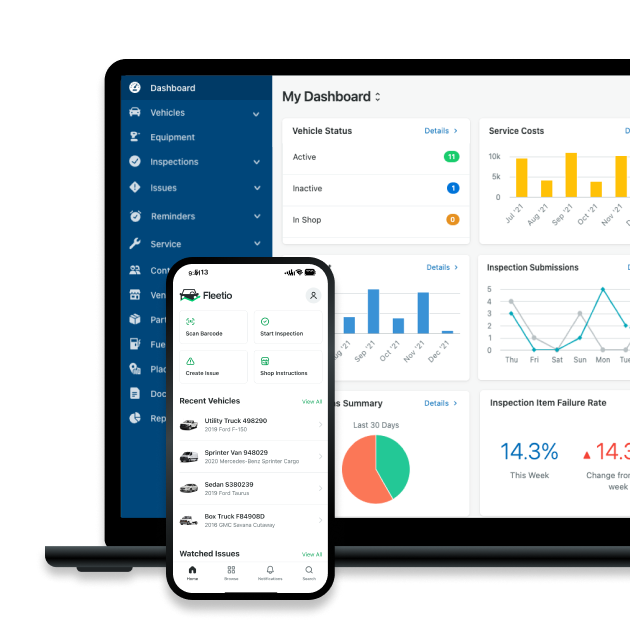How Municipal Fleets Are Adapting When New Isn’t an Option
Through tight budgets, public fleets are often mandated to do more with less. At GFX 2025, public fleet leaders Cambridge, MA to Trussville, AL share how, they're extending the lives of their assets without sacrificing safety, uptime or public trust.
Oct 8, 2020 | Updated: Aug 8, 2025
6 min read
Key takeaways from GFX 2025
- Maintain proactively, not reactively. Tailoring your maintenance to usage patterns, like switching from mileage to engine hours, helps extend the life of aging vehicles.
- Build trust with consistent data. Transparent, data-driven communication with stakeholders makes it easier to justify refurbishments and long-term investments.
- Plan smarter, replace slower, stay ready. Strategic forecasting helps municipal fleets phase out aging assets gradually, even when funding or lead times are limited.
In 2025, with procurement delays stretching into years and budgets under constant scrutiny, government fleets are being pushed to do more with less, especially when it comes to aging assets.
At this year’s Government Fleet Expo (GFX), public fleet managers from Cambridge, MA, Farmers Branch, TX, and Trussville, AL shared how they’re adapting: fine-tuning preventive maintenance strategies, setting realistic expectations around refurbishment, and using data to make smarter replacement decisions.

The value of proactive fleet maintenance
As assets age, maintenance needs increase and so does the risk of unplanned downtime. For government fleets, this isn’t just inconvenient; it’s costly and, in some cases, dangerous. Emergency vehicles sitting idle can mean delayed response times. According to our 2025 Fleet Benchmark Report, assets over 10 years old cost 35% more per mile to operate than newer ones.
At GFX 2025, multiple fleet managers emphasized that proactive maintenance – especially when tailored to how an asset is used – can be the most reliable way to extend useful life and manage government fleet costs.
Investing in your vehicles before experiencing issues can extend vehicle lifetimes, save money and improve safety.
4 smart strategies to extend the life of government assets
Stretching limited budgets doesn't have to mean running assets into the ground. These proven strategies—shared by public fleet leaders and supported by cost data—can help you get more value out of your vehicles without sacrificing reliability.
1. Tailor preventive maintenance to actual usage
For many years, the folks who ran the fleet department for the city of Farmers Branch, Texas followed a mileage-based preventive maintenance schedule. Every 5,000 miles, they’d bring their vehicles into their shop to change their oil, rotate their tires, etc. And while this approach did a decent job at minimizing unplanned downtime, it didn’t reflect how the vehicles were being operated.
We’ve got a city that’s about fifteen square miles. It’s not very big. So [basing our PM] on miles didn’t really make a lot of sense for us because it would take a long time for [our drivers] to drive 5,000 miles between PM services. Kevin Reinartz, Fleet Operations Manager at Farmers Branch
Because of this, even over the course of a month, many of the city’s vehicles don’t travel very far. And as a result of the city’s mileage-based PM schedules, those vehicles would go long stretches without being serviced.
Recently though, when Farmers Branch installed telematics into their vehicles and integrated them with Fleetio, the city decided to change its approach. Instead of basing PM off mileage, they switched to working off engine hours. And, according to Kevin, the change has been “extremely beneficial,” especially for the city’s police fleet. By servicing their police vehicles every 250 engine hours, the city has seen a meaningful improvement in their uptime.
2. Refurbish strategically, and communicate your plan
In Cambridge, the finance department was once hesitant to fund refurbishments due to past experiences with expensive repairs on aging trucks.
Replace or Refurbish?
- The cost to replace the vehicle – While post-refurbishment CPM can be tricky to predict, comparing the cost of replacement against refurbishment is a good starting point.
- The condition of the vehicle – Refurbishment is unlikely to make a vehicle on its last legs cost-effective, but could be a good investment for a vehicle in good shape for its age.
- How long procuring a replacement will take – If years-long lead times are unavoidable, refurbishment can help ensure your current vehicle remains operational until its replacement arrives.
- How well-equipped the vehicle is – If an older vehicle lacks features you consider mandatory for new purchases, refurbishment might not be worth the investment.
While almost every fleet manager has to contend with their expenses being scrutinized (to some degree), those who work in government practically operate under a microscope. How they spend their budget is a matter of public record and seen as reflective of the trustworthiness of elected officials.
But the hardest part was convincing our finance department that what we were doing made sense financially—that it wasn’t just throwing good money at bad things. Tom Rowlings, Assistant Fleet Manager at Cambridge
To overcome this stigma, Tom worked to set realistic expectations around vehicle refurbishment with Cambridge’s non-fleet stakeholders. He explained how refurbishing can’t achieve miracles, but can reliably extend the life of an asset in decent shape by around five years.
Thanks in part to data captured in Fleetio, Tom was able to successfully make the case that it was in the city’s financial interest to take another shot at refurbishing its vehicles.
3. Replace vehicles incrementally (based on priority)
Due to budget limitations, most public fleets don’t have the option of replacing all of their oldest assets in one fell swoop. Fortunately though, by prioritizing what vehicles need to go based on condition, utilization, repair history and operational importance, replacing vehicles incrementally can still be an effective approach.
At GFX, the panelists emphasized the value of long-term planning – not just to guide decisions internally, but to earn trust from their leadership teams. Tom shared how developing a five-year replacement forecast, complete with asset condition tiers and “past-due” designations, helped communicate just how dire Cambridge’s fleet vehicle needs had become.
The biggest thing that's helped me is creating a long forecast for fleet replacements so that my finance team and my city managers know what's coming down the line so that they can appropriately find the funds and justify the reason for these.
By showing where vehicles fell in the lifecycle curve, and the potential consequences of deferring replacement, his team created space for more flexible funding conversations.
4. Eliminate underutilized assets to unlock capital
Many government fleets carry underused vehicles out of habit or contingency planning. But holding on to idle assets adds cost without return, especially when they're still insured, fueled and occasionally maintained.
Tracking utilization data through platforms like Fleetio helps identify which assets are gathering dust. Once flagged, these vehicles become candidates for resale, creating a real opportunity to reinvest in higher-priority assets or programs without having to request additional funds.
Some fleets have even tied this process into their capital forecasting. By proactively identifying units with declining value and limited operational benefit, they’re able to phase them out in a controlled way, making room for lease programs or funding refurbishments without increasing the overall fleet size.
With a decreasing budget and aging vehicles, it is important for government fleets to be proactive and make smart monetary decisions based on data. Remain proactive in your vehicle maintenance and be sure to consider your options when the time comes to replace fleet vehicles.
We help municipal fleets minimize mistakes
Small oversights can break budgets — missed inspections, ongoing repairs, unplanned downtime. Fleetio helps government fleets stay compliant, cut costs and operate with total visibility from one centralized platform.
See your fleet in full view →
Jessie Robinson

Fleet Content Specialist
Through interviews, blog posts and webinars, Alex covers the tactics and technologies exceptional fleet managers use to achieve results. By sharing their success stories, his work aims to inform and inspire fleet professionals of all stripes.
LinkedIn|View articles by Alex BorgReady to get started?
Join thousands of satisfied customers using Fleetio
Questions? Call us at 1-800-975-5304

